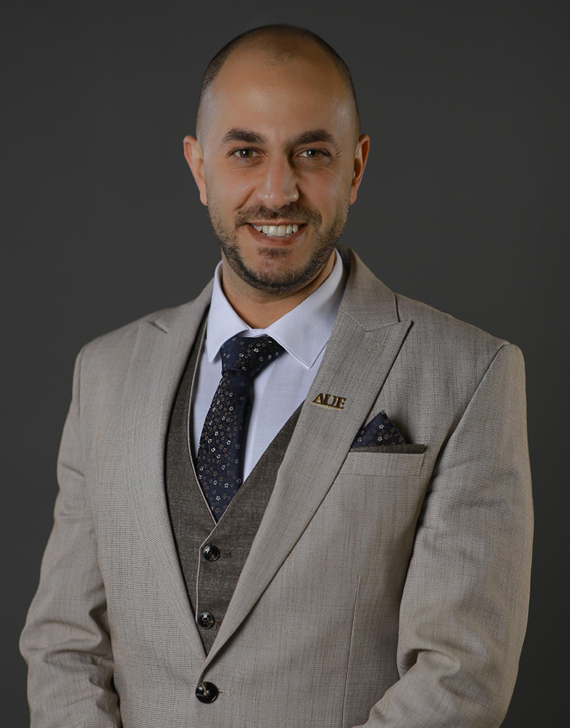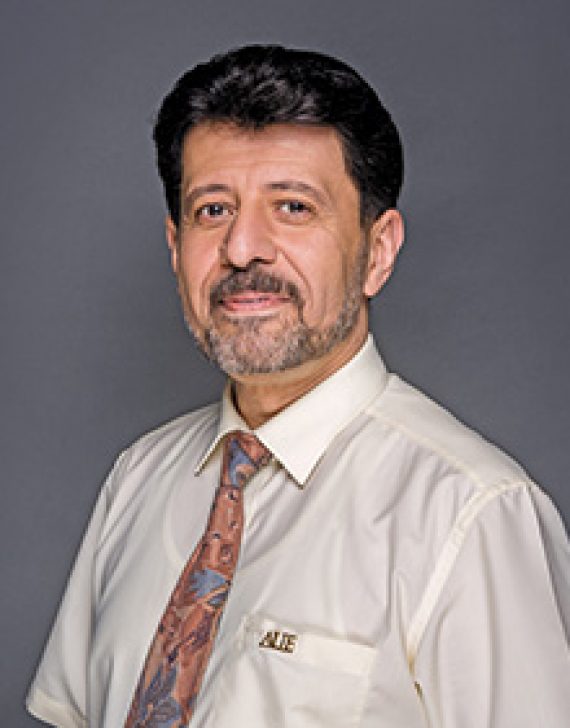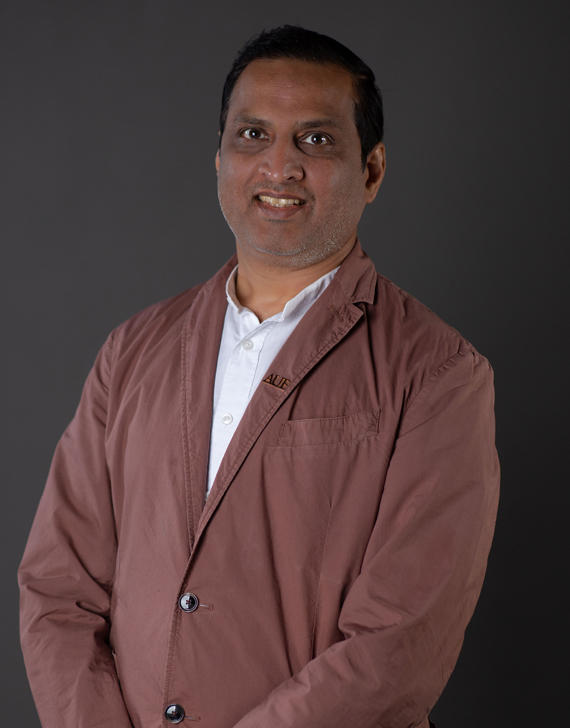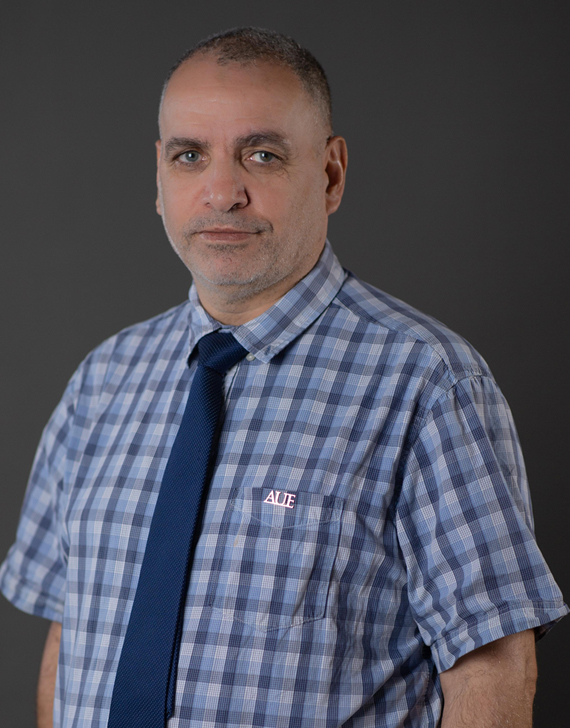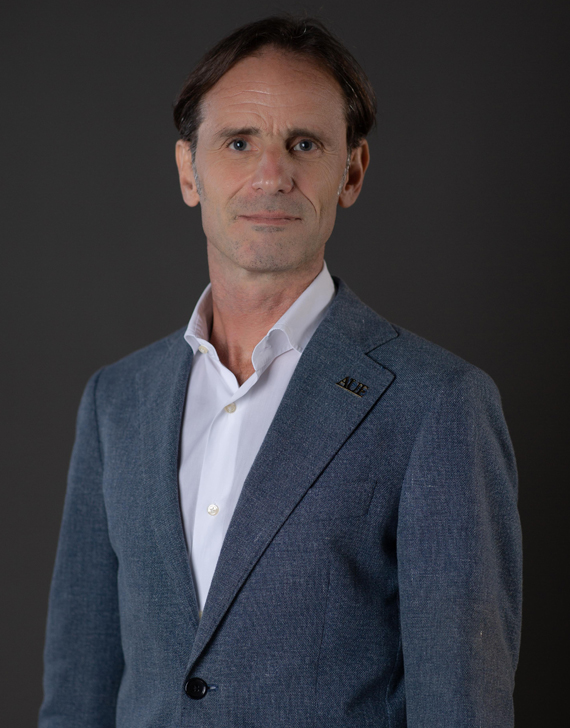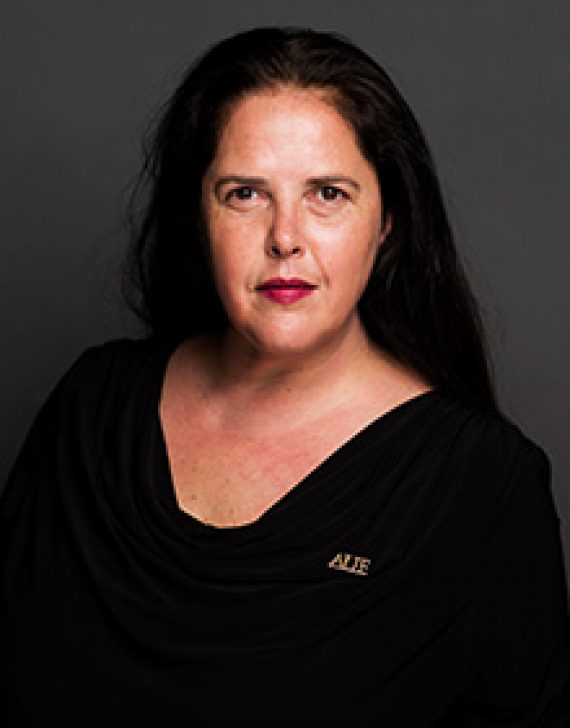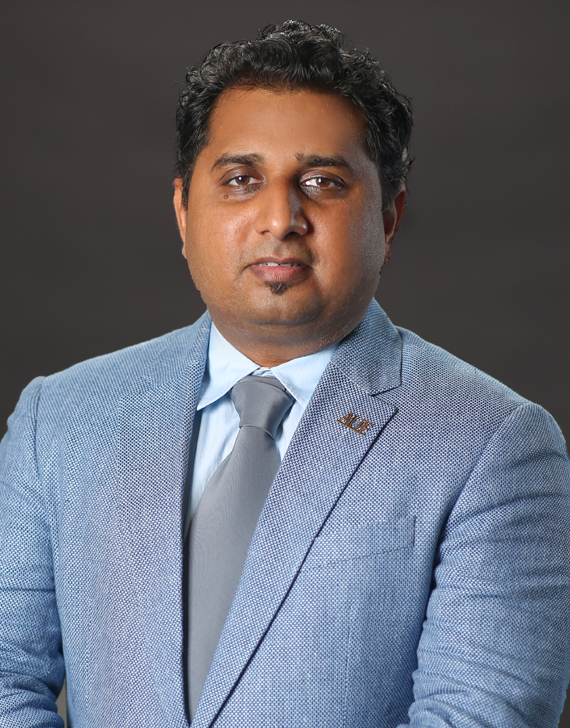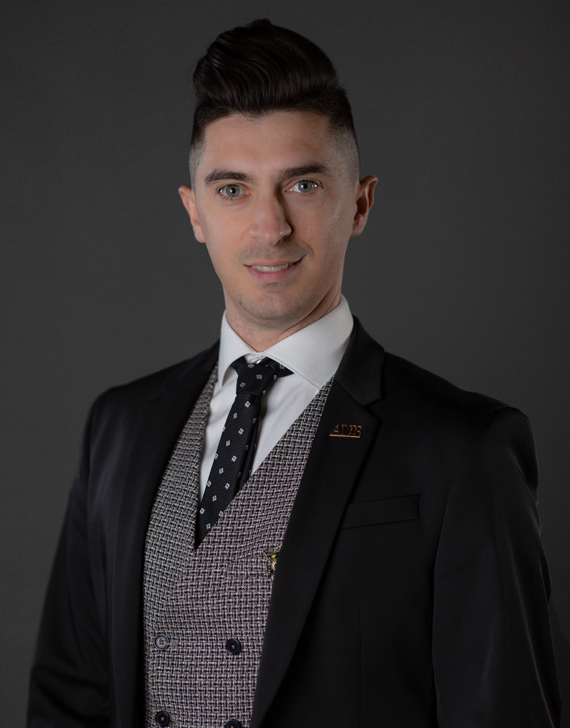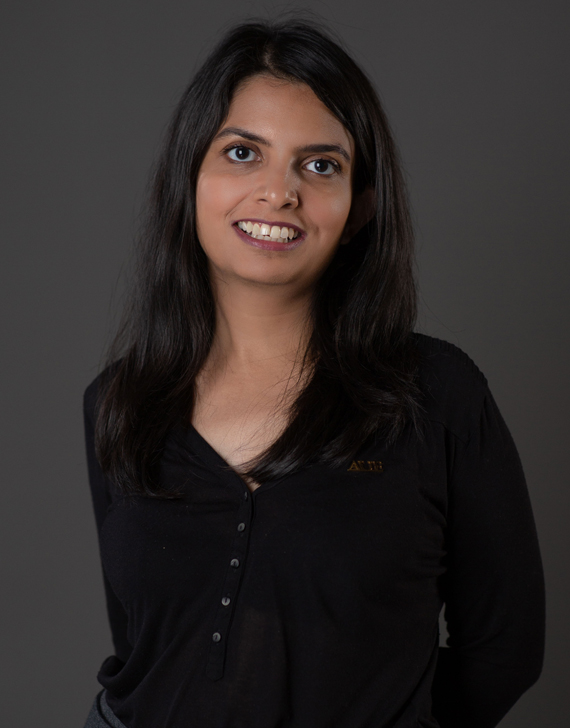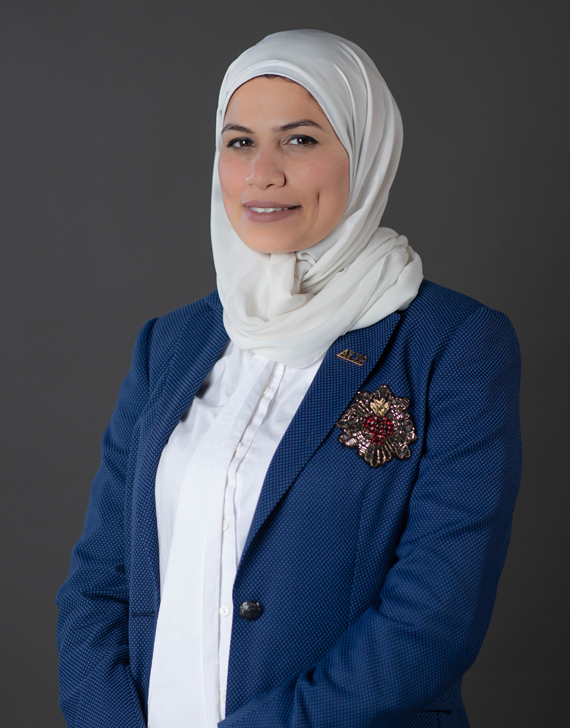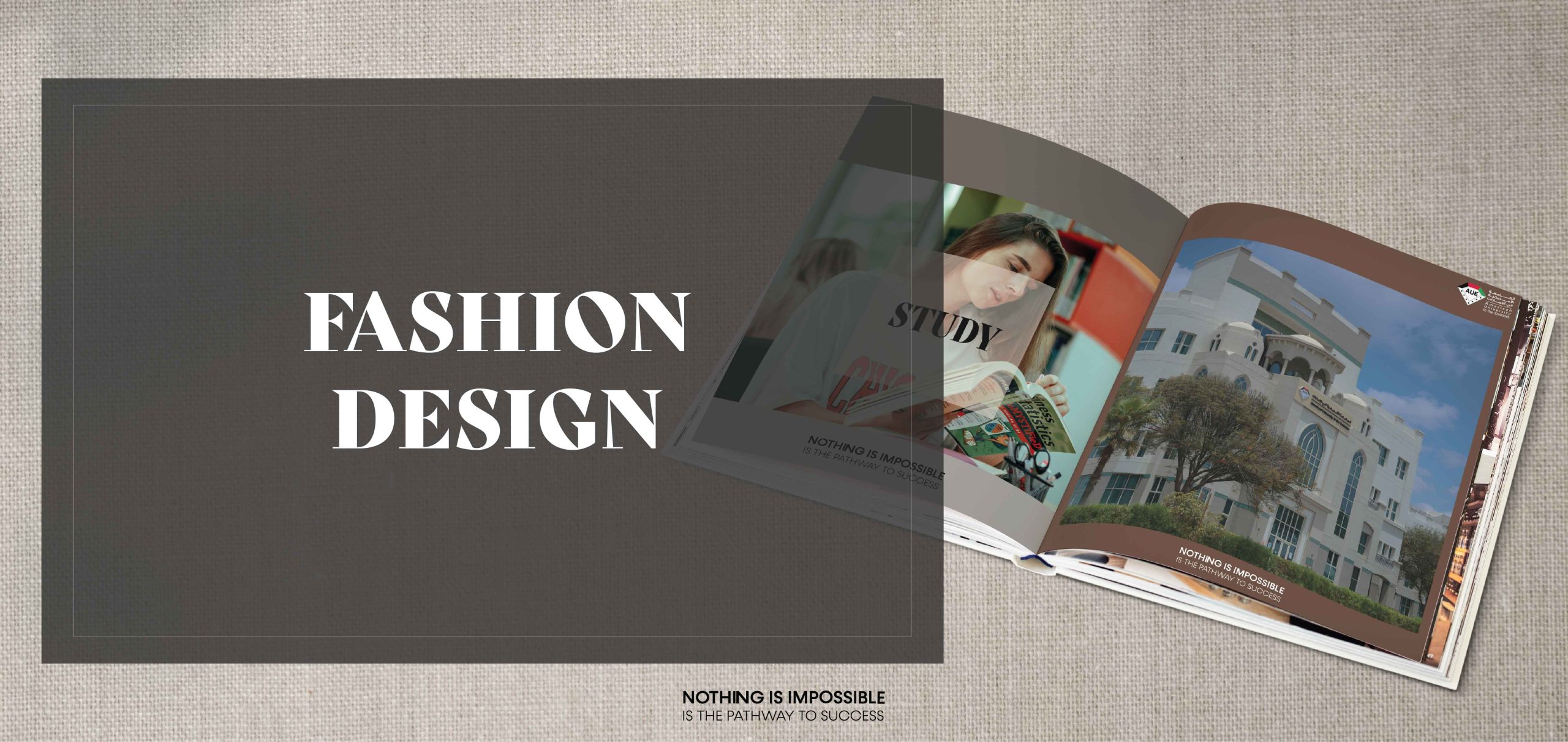
- Overview
- Program Structure
- Accreditations
- Faculty
- Admission
-
Duration
4 Years
-
Classes
Weekday Weekend
-
Fees
Tuition (One Semester) ……… Approx. 20,000 AED
One academic year is two semesters
Admission (One Time) ……… 3,150 AED
About Program
Program Goals
- Provide students a substantial understanding and fair knowledge of the Design fields.
- Provide students with specialized skills that enable them to develop innovative, creative and problem-solving skills and make aesthetic judgments in their area of work.
- Prepare students for successful and productive careers in Design fields by adapting to the technological changes through teamwork, ethical concerns, and effective communication.
- Enable students to pursue their advanced studies and life-long learning in the design field.
Program Learning Outcomes
- Demonstrate breadth and depth of knowledge in fashion design concepts and processes using industry terminology.
- Integrate knowledge and relevant technologies, techniques and equipment to achieve innovative design solutions.
- Apply trend research, design aesthetics and creative skills per industry standards.
- Produce a satisfactory body of creative work appropriate for a professional position in the fashion industry.
- Appraise fashion design practices, ethical and social responsibilities in regional and global contexts.
Preparatory Courses
Prior to their enrollment in the program, students applying for Bachelor of Science in Design must sit for the placement test related to the program, failure to successfully passing the placement test, they are required to enroll in the following courses:
#
1
2
3
Course Code
CIT 90
ENG 99
DES 90
Courses
Computer Preparatory
Academic Writing (*)
Drawing Preparatory
Credit Hours
0
0
0
Exemption Condition
Passing the Placement Test
Passing the Placement Test
Passing the Placement Test
(*) Students must pass the English Proficiency.
Program Structure
Course Category
General Education Courses
Core Courses
Specialization Courses
Free Electives
Total
Total Number of Courses
10
12
14
2
38 Courses
Total Number of Credit Hours
30
33
57
6
126 Credit Hours
- General Education Courses
- Core Courses
- Specialization Courses
- Free Electives
A: University Core Requirements
The student selects 6 credit hours (2 courses) from the list below:
The purpose of this course is to facilitate the process of transition into new academic and cultural environment for the new students enrolled in the AUE. Furthermore, it aims to promote their confidence so that they could succeed and meet the academic requirements. The course assimilates academic content with interactive in class activities to ensure understanding of curricular options and begin to develop a future career plan through self-reflection.
Innovation is the engine of opportunity and, acting as a catalyst, this course is intended to ignite an interest in innovation and inspire entrepreneurial action. At the core of innovation and entrepreneurship is a commitment to experiential learning that will encourage students to engage in critical thinking, creative problem-solving while also equipping them with the soft skills needed in their pursuit of academic and professional endeavors. Students will discuss the relevance and role of innovation and entrepreneurship in work and life situations; determine opportunities for creative disruption and design a strategy for its implementation; develop a practical understanding of innovation through thoughtful debate and exercises; and demonstrate critical thinking and individual insight with a personal mastery portfolio.
B: Languages and Communication Studies
The student must select 9 credit hours (3 courses) from the list below.
Students must take all of the following courses:
This course provides students with advanced writing skills in English so that they can successfully pursue their studies in various academic specializations. It helps students to develop, improve, and upgrade their writing and structure skills, and it also acquaints students with technical writing, research papers, and essays since brief research methods are applied in student projects and assignments.
Students must take one of the following Arabic Language courses:
This course is designed to enable the Arabic-speaking student with the necessary language skills, especially focusing on the steps of writing reports, official letters and systematic research.
To achieve this, and to develop the student’s abilities to understand correctly what he reads and listens, and to gain the ability to write articles, reports, meeting minutes and recommendations of conferences and seminars in a sound manner, the course was concerned with training the student in basic writing skills; such as multiple spelling rules, punctuation marks, paragraph system, and essay writing progressively.
This course is based on the principle that “Education” is an accumulative task especially when it comes to language learning. This process undergoes specific stages to assist the non-Arabic speakers to reach the ultimate goal which is to acquire the required skills (listening, speaking, reading, writing) easily and accurately. To achieve this aim, text-based dialogues are provided as head start for the non-Arabic speakers to continue to the higher levels. The course also provides basic elements for reading, writing, dialogues, and listening to assist the learners to confidently interact with the Arab community.
C: The Natural sciences or Mathematics
The student must select 6 credit hours (2 courses) from the list below:
The ‘Principles of Environmental Science’ course is designed to introduce the fundamental concepts of Environmental Science to undergraduate students. It includes topics from different areas of study such as ecology, biology, soil science and atmospheric science. The course aims at raising environmental awareness among students and providing them with the scientific knowledge and skills to identify, prevent and solve environmental problems. Additionally, it deals with ecological concepts, organism interactions, communities and ecosystems. The course focuses on key areas of population dynamics, biodiversity, human activities and the environment managed ecosystems, air quality, water and solid waste management
This course gives a This course gives a thorough introduction to sustainable energy, conservation, and energy efficiency within the UAE and the world. It will explore the relationship between energy, environment, economy and ecological well-being. It will discuss energy production from the biology, natural science, environmental science and social sciences perspectives. A variety of topics will be introduced including global warming, climate change, sustainable food production, solid waste management, environmental and natural resources laws. The course includes the growing challenges of climate change and energy crisis and proposes solutions to overcome them.
This course is designed to develop a good understanding of the fundamental concepts of mathematics. It also stresses on crucial cognitive transferable skills such as the ability to think logically and concisely. Mastering this course will give students the confidence to go on and do further courses in mathematics and statistics.
D: The Social or Behavioral Sciences
The student must select 3 credit hours (1 course) from the list below:
This course provides an understanding of anthropology, the study of human beings throughout time and space. Anthropology is a broad discipline that studies human from a holistic perspective looking at both biological and cultural aspects. Anthropologists use different methods in order to understand and study humans. During this course, students will experience ethnographic fieldwork.
This course will introduce the students to the key concepts of Political Science and its principal tools. The course will discuss the role of main political actors in the field of politics and their function.
This course serves as an introduction into the interdisciplinary and multifaceted social sciences. The content on the course covers the range of different disciplines that social sciences consists of, namely: anthropology, sociology, psychology, political science, economics and to a lesser extent also history and geography. The secondary aim of the course is moreover for students to develop their critical thinking skills by engaging actively with material about social issues, social change and social institutions.
An introduction to the science of psychology, its theories and foundations. The course is focused on principles and research methodologies, including the following topics: history of psychology, the biology of mind, memory, learning, child and personality development, psychological disorders and therapy. The aim of the course is to introduce the basis of psychology, provide the foundational knowledge to pursue the subject in more depth in the future, and build an ongoing interest in the application of psychology in everyday life.
This course will provide the students with a comprehensive overview of geography. Emphasis is on concepts that are necessary to understand global, regional and local issues. This course also includes topics on both human and physical geography.
E: The Humanities or Arts
The student must select 3 credit hours (1 course) from the list below:
F: Islamic Studies
The student must select 3 credit hours (1 course) from the list below
G: UAE Studies
The student must select 3 credit hours (1 course) from the list below.
This course examines color theory as an aid to communication, control and expression in traditional and contemporary design. The fundamental course allows students to explore color topics including color theory, color interaction, and color psychology. Students will study a wide range of creative and technical aspects of color and its use in design, experimenting with traditional mediums and digital applications.
This course is one of the fundamental courses in which the students will be introduced to the visual elements of design comprising of: point and line; shape and form; surface and texture; color and value; light and shadow; negative and positive space. The students will practice design principles: unity and variety; similarity; emphasis and point of interest; scale; proportion; and balance. This course is designed to give the students a strong understanding of 2D and 3D visual communications.
Fundamentals of Graphic Illustration and Digital Imaging introduces students to the use of a computer as a powerful digital drawing and imaging tool. The focus of the course is on basic computer skills and use, mastering fundamental digital illustration and imaging skills, and developing efficient working styles. The course learning experience incorporates a variety of visual artwork strategies including but not limited to, color/ texture enhancements, typography, pen/ brush tools, , perspective tool, using different color schemes. This course involves considerable hands-on instruction and multiple projects using Adobe Photoshop/ Illustrator.
This course provides a core introduction to drawing, covering a wide range of basic and intermediate practical and technical skills. Students will explore approaches and concepts to the subject through manual practice using a comprehensive range of media and with reference to great masters in the field. Traditional and objective drawing skills in the use of line, tone, form and perspective provide the foundation for learning in this course. Students are required to develop their ability to observe, perceive and interpret through drawing the world around them, reflecting their understanding of 2D and 3D space.
This course introduces students to human centered design thinking methods and practices through a variety of hands-on activities. DT is a methodology used by designers for the identification of problems and the definition of innovative solutions. Students will engage in processes for idea generation including sketching and diagramming, concept mapping and low-fidelity prototyping infusing visualization techniques and empathic tools into their design process.
This course is a chronological survey of art and design offering students an in-depth understanding of the role of art throughout history with a strong focus on aesthetic values, socio-cultural influences and technical terminology. Architecture, sculpture, painting, decorative arts, prehistoric art, design of the ancient world, the world beyond Europe, early Christian and Islamic art and the art of the Middle-Ages and Gothic period form the foundation of the course material spanning a period from 40,000 BC to 1300 AD.
This course covers the extensive cultural shifts from the early Renaissance through to the 20th century. Students will study painting, sculpture, furniture architecture as individual works in relation to their geographical, social, political, and religious environments. Also, analysis and comparative study of periodic decorative elements, strong designs and architectural features will be conducted.
In this course, students will learn various techniques to construct objects in digital 3D space, as well as physical 3D solutions. Students will follow a concept development process of research and sketching, to generate designs for 3D production. A final original design, related to each student’s major, will be constructed using industry-standard 3D software.
The course is designed to promote interdisciplinary collaboration in design. Graphic, Interior, Fashion Design and Digital Animation are brought together into one studio environment to allow students with different skills and strengths work as a team solving a relatively complex design problem. Students develop a research plan followed by the establishment of intent and context for the topic and identification of stakeholders, leading to concept exploration and creation of a holistic design solution in cooperation with other specializations, institutes or with professionals from the industry.
Pre-Internship is a zero credit hour internship preparatory course designed for students seeking an internship. The course will prepare students to successfully plan their internship by researching and identifying potential internship opportunities, creating professional resume and letter of introduction, developing interviewing and networking skills as well as a portfolio per industry requirements. Students will go through different learning modules including experiences, team work skills, communication skills, leadership skills, problem solving, self-management and professionalism to be able to make the most of their internship.
The college considers students’ internship as an essential channel that brings together the college, the students, and the job marketplace. Furthermore, internship is a method that integrates the instructional theoretical backgrounds to real existing practice. The training allows them to work under the observation and guidance of the field supervisor without replacing any regular employee. The internship is closely monitored by a college faculty member as an academic supervisor.
The course explores the concept of the fashion design cycle from trend research and production to fashion retailing. The processes involved in conceptualizing, designing and creating a collection for various sectors of the industry are examined. The students will gain insights into the working processes and inter-relationships in the international fashion industry, as well as understand relevant areas for design practice and career opportunities.
This course introduces students to textile materials and their application in fashion design. It explores various textile processes, techniques, materials and their performance, serviceability, identification and selection of suitable fabrics. Environmental and sustainability issues associated with textiles practice are also examined to provide a comprehensive view of the textile industry and its relation to fashion design.
The course introduces fashion illustration styles and techniques. The focus is on the development process of the fashion figure, design details, fabric rendering, flats, customer profile analysis, and collection development. The students will also discover and compare the work of famous fashion illustrators and consequently develop their individual style that will be demonstrated in the portfolio.
This course introduces students to the fundamentals of sewing and garment construction. They develop skills in the operation and maintenance of professional sewing equipment and learn to apply various hand and machine techniques for the construction and appropriate finishing of garments. They explore the variation in sewing techniques for different types of materials and execute an outfit in fashion fabric with manual dexterity.
In this course, students will learn to adapt garment construction principles, techniques and skills based on the lean methodology of “learn, build, test and repeat”. They will create prototypes that will be tested and recreated to achieve new outcomes per prevailing industry standards and requirements.
This course provides fashion management and business knowledge to the students through real world experience. The different aspects of fashion retail industry and global supply chain are explored in relation to consumer behavior and current industry trends from line planning to product development, visual merchandising, retail distribution, marketing and management. Through industry-related projects involving in-depth research, data collection and analysis via case studies, site visits, surveys and interviews, students enhance their competencies and communication skills. They participate in exciting group exercises, model making and fashion industry events/presentations to gain insights about the operation of the global fashion system to be able develop their own merchandising and management strategies.
This course is aimed at providing students the knowledge and skills of the principles and techniques of flat patternmaking to produce drafts according to standard and individual measurements. The students will prepare paper patterns for different types of garments and garment parts and use their sewing skills to execute the pattern for an original design into an outfit. Students learn the importance of fit and balance in patterns to get a well finished garment
This course explores the application of computer-aided design (CAD) in the fashion industry. The students will be using industry-standard software to create and enhance digital designs including concept boards, storyboards, illustrations and flats. They will develop a portfolio of creative responses through trend research and analysis for effective visual communication.
This course is a study of three-dimensional fashion design through the technique of draping directly on a body form. Various silhouettes and garment style features are explored through draping in muslin, and then converted to flat patterns to have an integrated design approach. Students use the principles of draping to create original apparel designs in fashion fabric for specified target markets.
The course builds upon previously learnt apparel construction principles, techniques and skills to apply them in the production of various garments. The focus will be on integrating research and design to plan and construct complex outfits from muslin and subsequently with fashion fabric. The students will execute the construction using advanced tailoring techniques and develop their ability to achieve precision in fitting and adjustments.
This course covers the pre-production planning and processes for fashion design projects. The students will follow the necessary steps in the production pipeline while identifying and refining their idea, concept and methodology.
The capstone graduation project is the representation of the students’ in-depth learning and understanding of their field of specialization through a long-term project accomplished in a professional manner. They are evaluated on their ability to complete this project with originality and quality, applying the skills, techniques and methodologies they have learnt during their course of study.
The student is assigned to research and identify a topic, and develop a detailed research proposal highlighting the goals, objectives, tasks, methodology and time plan. The topic could range from an academic research to school/ community service, student-developed business or any other area of personal interest. The student communicates regularly with his/ her academic-capstone advisor for review, while working constantly to improve the outcome by building upon previously gained expertise. The academic-capstone advisor contributes through meaningful feedback and setting expectations of standards, offering an opportunity for open-ended learning through self-reflection and improvement.
Students of fashion design are expected to create a minimum of five original pieces for a clothing line with the integration of trend research and creative response. The process is documented, findings are compiled and presented orally as well as in writing through a capstone report.
The project is divided into three distinct phases: 1. Research and topic selection
2. Conceptual and design development
3. Design execution/ design presentation, with necessary documentation and a comprehensive report
This course studies the historic development of Western and Asian fashion design and costumes. The evolution of clothing from the ancient times to the present day will be examined in detail, with an understanding of the social, technological and artistic influences. Students will study the significant fashion designers and their contribution to the field of fashion. They will comprehend and explore extensive design possibilities and apply them in contemporary fashion design.
This course provides an opportunity for students to focus on various issues in fashion design and to study advanced techniques and processes. Course content vary each time the course is offered. The course emphasizes research analysis and the creative process that leads to innovative solutions and allows students to pursue individual projects related to the subject of the course. The course may include lectures, discussions, individual projects and critique, depending on the nature of the topic.
6 Credit Hours must be chosen from any other college/ specialization in condition the prerequisites of the chosen courses are met.
Recommended Study Plan
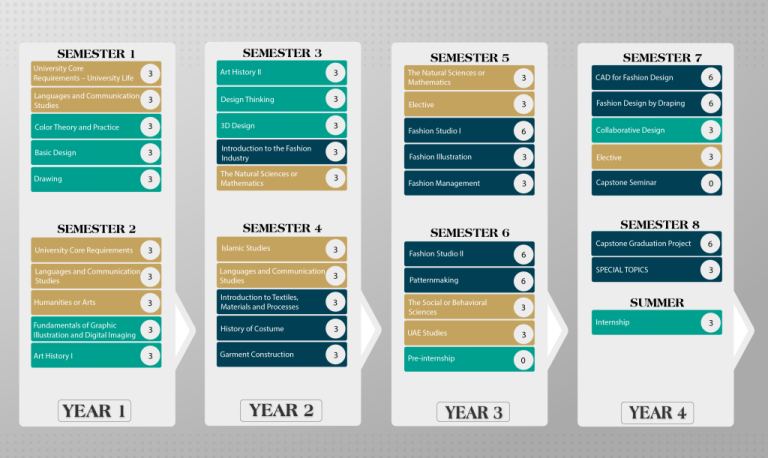
Accreditations
The American University in the Emirates is licensed by the UAE Ministry of Education – Commission for Academic Accreditation | caa.ae
The National Association of Schools of Art and Design (NASAD) has granted AUE’s Bachelor of Science in Fashion Design, Bachelor of Science in Graphic Design, Bachelor of Science in Interior Design, and Bachelor of Science in Animation the designation of Substantial Equivalency with accredited programs in the United States.
11250 Roger Bacon Drive, Suite 21, Reston, VA 20190-5248, USA
Telephone: +1-703-437-0700
nasad.arts-accredit.org
- For Admission Requirements for Freshman students (those who have just completed high school and have never attended an Institute of Higher Education before) click here
- For Admission Requirements for Transfer students (those who have studied at another higher education institution and would like to transfer their credits to AUE) click here
- For Admission Requirements for Visiting students (those who are currently enrolled in a different higher education institution and would like to take some courses at AUE as part of the study plan of their home university/college) click here
Joining the Program
- Fall Semester
-
September
-
Spring Semester
- January
- Summer Semester
- May
